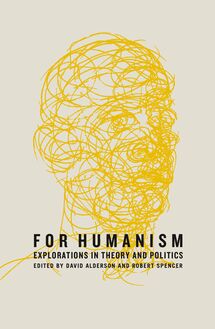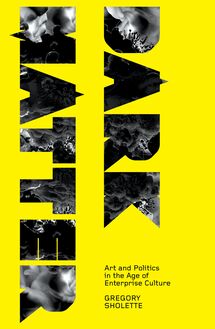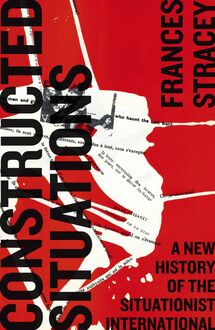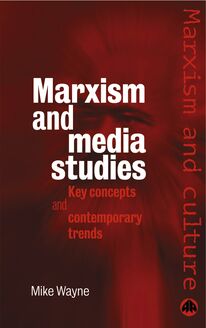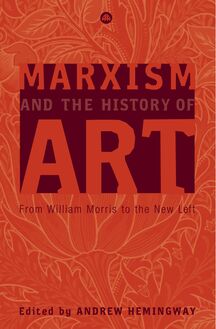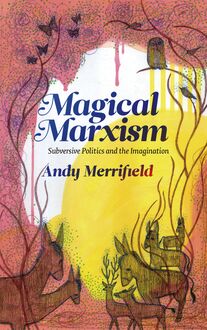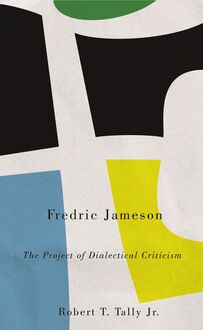Marxism and the History of Art , livre ebook
223
pages
English
Ebooks
2006
Vous pourrez modifier la taille du texte de cet ouvrage
Obtenez un accès à la bibliothèque pour le consulter en ligne En savoir plus
Découvre YouScribe en t'inscrivant gratuitement
Découvre YouScribe en t'inscrivant gratuitement
223
pages
English
Ebooks
2006
Vous pourrez modifier la taille du texte de cet ouvrage
Obtenez un accès à la bibliothèque pour le consulter en ligne En savoir plus
Publié par
Date de parution
20 juillet 2006
Nombre de lectures
2
EAN13
9781783716166
Langue
English
Poids de l'ouvrage
1 Mo
This book encompasses a range of influential thinkers and historians including William Morris, Mikhail Lifshits, Frederick Antal, Francis Klingender, Max Raphael, Meyer Schapiro, Walter Benjamin, Henri Lefebvre and Arnold Hauser. It also addresses the heritage of the New Left. In the spirit of Marxism, the authors interpret the achievements and limitations of Marxist art history in relation to the historical and political circumstances of its production, providing an indispensable introduction to contemporary radical practices in the field.
Preface
1. Introduction: Marxism and Art History after the New Left by Andrew Hemingway
2. William Morris: Decoration and Materialism by Caroline Arscott
3. Mikhail Lifshits: A Marxist Conservative by Stanley Mitchell
4. Frederick Antal by Paul Stirton
5. Art as Social Consciousness: Francis Klingender and British Art by David Bindman
6. Max Raphael: Aesthetics and Politics by Stanley Mitchell
7. Walter Benjamin’s Essay on Eduard Fuchs: An Art-Historical Perspective by Frederic J. Schwartz
8. Meyer Schapiro: Marxism, Science and Art by Andrew Hemingway
9. Henri Lefebvre and the Moment of the Aesthetic by Marc Léger
10. Arnold Hauser, Adorno, Lukács and the Ideal Spectator by John Roberts
11. New Left Art History and Fascism in Germany by Jutta Held
12. The Turn from Marx to Warburg in West German Art History, 1968-90 by Otto Karl Werckmeister
Index
Publié par
Date de parution
20 juillet 2006
Nombre de lectures
2
EAN13
9781783716166
Langue
English
Poids de l'ouvrage
1 Mo
Marxism and the History of Art
Marxism and Culture
Series Editors: Mike Wayne and Esther Leslie
Marxism and Media Studies Key Concepts and Contemporary Trends Mike Wayne
Philosophizing the Everyday The Philosophy of Praxis and the Fate of Cultural Studies John Roberts
MARXISM AND THE HISTORY OF ART
From William Morris to the New Left
Edited by Andrew Hemingway
First published 2006 by Pluto Press 345 Archway Road, London N6 5AA and 839 Greene Street, Ann Arbor, MI 48106
www.plutobooks.com
Copyright © Andrew Hemingway 2006
The right of the individual contributors to be identified as the authors of this work has been asserted by them in accordance with the Copyright, Designs and Patents Act 1988.
British Library Cataloguing in Publication Data A catalogue record for this book is available from the British Library
ISBN 978 0 7453 2330 5 hardback ISBN 978 0 7453 2329 9 paperback ISBN 978 1 7837 1616 6 ePub ISBN 978 1 7837 1617 3 Mobi
Library of Congress Cataloging in Publication Data applied for
10 9 8 7 6 5 4 3 2 1
Designed and produced for Pluto Press by Chase Publishing Services Ltd, Sidmouth, EX10 9QG, England Typeset from disk by Stanford DTP Services, Northampton, England Printed on demand by CPI Antony Rowe, Chippenham, UK and Edwards Brothers in the United States of America
Contents
Illustrations
Series Preface
Acknowledgments
Introduction Andrew Hemingway
1.
William Morris: Decoration and Materialism Caroline Arscott
2.
Mikhail Lifshits: A Marxist Conservative Stanley Mitchell
3.
Frederick Antal Paul Stirton
4.
Art as Social Consciousness: Francis Klingender and British Art David Bindman
5.
Max Raphael: Aesthetics and Politics Stanley Mitchell
6.
Walter Benjamin’s Essay on Eduard Fuchs: An Art-Historical Perspective Frederic J. Schwartz
7.
Meyer Schapiro: Marxism, Science and Art Andrew Hemingway
8.
Henri Lefebvre and the Moment of the Aesthetic Marc James Léger
9.
Arnold Hauser, Adorno, Lukács and the Ideal Spectator John Roberts
10.
New Left Art History’s International Andrew Hemingway
11.
New Left Art History and Fascism in Germany Jutta Held
12.
The Turn from Marx to Warburg in West German Art History, 1968–90 Otto Karl Werckmeister
Notes on Contributors
Notes
Index
Illustrations
1.
William Morris, Pimpernel , wallpaper, 1876. V & A Images/Victoria & Albert Museum.
2.
‘Carved Heads of Maori Chief’s Staves’, from Henry Balfour, The Evolution of Decorative Art , 1893, fig. 23. Courtauld Institute of Art: Photographic and Imaging.
3.
Illustration of tattooed heads, figs 31 and 32 from Alois Riegl, Stilfragen , 1893. Courtauld Institute of Art: Photographic and Imaging.
4.
‘Tawhiao, The Maori King’, from Illustrated London News , 14 June 1844, p. 576. Special Collections, Senate House Library, University of London.
5.
Giotto, The Confirmation of the Rule of the Franciscan Order , fresco, Bardi Chapel, S. Croce, Florence, c . 1320. Photo Alinari.
6.
Nardo di Cione, The Damned (detail of Last Judgment ), fresco, Strozzi Chapel, S. Maria Novella, Florence, 1354–57. Photo Alinari.
7.
Andrea Orcagna, Strozzi Altarpiece , tempera on wood, Strozzi Chapel, S. Maria Novella, Florence, 1357. Photo Alinari.
8.
Théodore Gericault, Entrance to the Adelphi Wharf , crayon lithograph, 1821. Private Collection, London.
9.
Richard Newton, A Will O Th’ Wisp , coloured etching. Private collection. Photograph: Warren Carter.
10.
C.J. Grant, Reviewing the Blue Devils, Alias the Raw Lobsters, Alias the Bludgeon Men , wood engraving, c . 1833. Private collection. Photograph: Warren Carter.
11.
J.C. Bourne, ‘Working Shaft, Kilsby Tunnel, July 8 th 1857’ and ‘Great Ventilating Shaft, Kilsby Tunnel’, lithograph. Photograph: Warren Carter.
12.
James Sharples, The Forge , steel engraving, 1849–59. Private collection. Photograph: Warren Carter.
13.
Pablo Picasso, Guernica , oil on canvas, 349 × 776 cm, 1937. Museo Nacional Centro de Arte Reina Sofía, Madrid. Photograph: Archivo Fotográfico Nacional Centro de Arte Reina Sofía, Madrid. © Succession Picasso/DACS 2006.
14.
The Punishment of Dirkos by Zethos and Amphion (the Farnese Bull), fig. 43 in Emanuel Loewy, The Rendering of Nature in Early Greek Art , 1907. Photograph: Warren Carter.
15.
Apollo from Tenea, fig. 27 in Emanuel Loewy, The Rendering of Nature in Early Greek Art , 1907. Photograph: Warren Carter.
16.
Henri Matisse, Nasturtiums with the Painting ‘Dance’ , oil on canvas, 191.8 × 115.3 cm, 1912. The Metropolitan Museum of Art, Bequest of Scofield Thayer, 1982 (1984.433.16). © Succession H. Matisse/DACS 2006.
Series Preface
Esther Leslie and Mike Wayne
There have been quite a number of books with the title ‘Marxism and …’, and many of these have investigated the crossing points of Marxism and cultural forms, from Fredric Jameson’s Marxism and Form to Terry Eagleton’s Marxism and Literary Criticism , Raymond Williams’ Marxism and Literature , John Frow’s Marxism and Literary History and Cary Nelson and Lawrence Grossberg’s Marxism and The Interpretation of Culture . These titles are now all quite old. Many of them were published in the 1970s and 1980s, years when the embers of 1968 and its events continued to glow, if weakly. Through the 1990s Marxism got bashed; it was especially easily mocked once its ‘actually existing’ socialist version was toppled with the fall of the Berlin Wall. Postmodernism made Marxism a dirty word and class struggle a dirty thought and an even dirtier deed. But those days that consigned Marxism to history themselves seem historical now. Signs of a regeneration of Marx and Marxism crop up periodically – how could it be otherwise as analysts seek explanatory modes in a world that, through 15 years of perma-war and the New World Disorder, is deeply riven by strife and struggle? Anti-capitalism and anti-globalisation conceive the world as a totality that needs to be explained and criticised. Marxism, however critically its inheritance is viewed, cannot be overlooked by those who make efforts to provide an analysis and a consequent practice.
Our series ‘Marxism and Culture’ optimistically faces a pessimistic world scenario, confident that the resources of Marxism have much yet to yield, and not least in the cultural field. Our titles investigate Marxism as a method for understanding culture, a mode of probing and explaining. Equally our titles self-reflexively consider Marxism as a historical formation, with differing modulations and resonances across time, that is to say, as something itself to be probed and explained.
The first two books in the series address popular or mass culture. Mike Wayne’s Marxism and Media Studies outlines the resources of Marxist theory for understanding the contemporary mediascape, while also proposing how the academic discipline of Media Studies might be submitted to Marxist analysis. John Roberts’s Philosophizing the Everyday uncovers the revolutionary origins of the philosophical concept of the everyday, recapturing it from a synonymity with banality and ordinariness propounded by theorists in Cultural Studies.
The present volume shifts the attention to ‘high culture’. Taking into its broad scope the insights of a number of key figures in Marxist aesthetics, the volume draws a balance sheet. Marxism’s directedness towards transformation might make it sit uneasily in a discipline which has characteristically been about the analysis of objects that are property, objects that are in many ways related to conservation, tradition, preservation and value in its monetary guise. However, this volume reveals the pertinence of Marxist theory to manifold aspects of the art world: the materiality of art; the art market and the vagaries of value; the art object as locus of ideology; artists, art historians and art critics as classed beings; art and economy; art as commodity; the analogism of form and historical developments. The book’s final chapters weight the analysis towards the moment just prior to ours, with the ascendance of the New Left in Visual Culture Studies. We hope that the research here stimulates further study of the contemporary relevance of Marxism in the field of culture, addressing further themes such as the role of funding and the role of the gallery, questions of recuperation, the demands of technology. We await proposals on these and other themes!
Acknowledgments
The project for this collection arose out of my experiences of teaching art-historical methodologies over the last 25 years and the frustration I have often felt that the interpretative and political tradition that is the foundation of my own thinking is so poorly represented in current literature about the discipline. The fact that so many friends have encouraged me to pursue it or offered to contribute confirmed that a publication along these lines is needed. Two events in particular served as further encouragement, namely the session ‘Towards a History of Marxist Art History’ that I co-organised with Alan Wallach for the College Art Association annual conference in Philadelphia in 2002, and the international conference on ‘Marxism and the Visual Arts Now’, held at University College London later in the same year and organised by Matthew Beaumont, Esther Leslie, John Roberts and myself. Both of these were well attended and prompted vigorous debate. Some of the conversations they started have since been continued in the ‘Marxism and Interpretation of Culture’ seminars at the University of London’s Institute of Historical Research. I must also mention the important work that has been done by Paul Jaskot and Barbara McCloskey in initiating and running the Radical Art Caucus of the College Art Association. Its sessions, too, have continued to prompt fresh thinking. In addition to those mentioned above and
